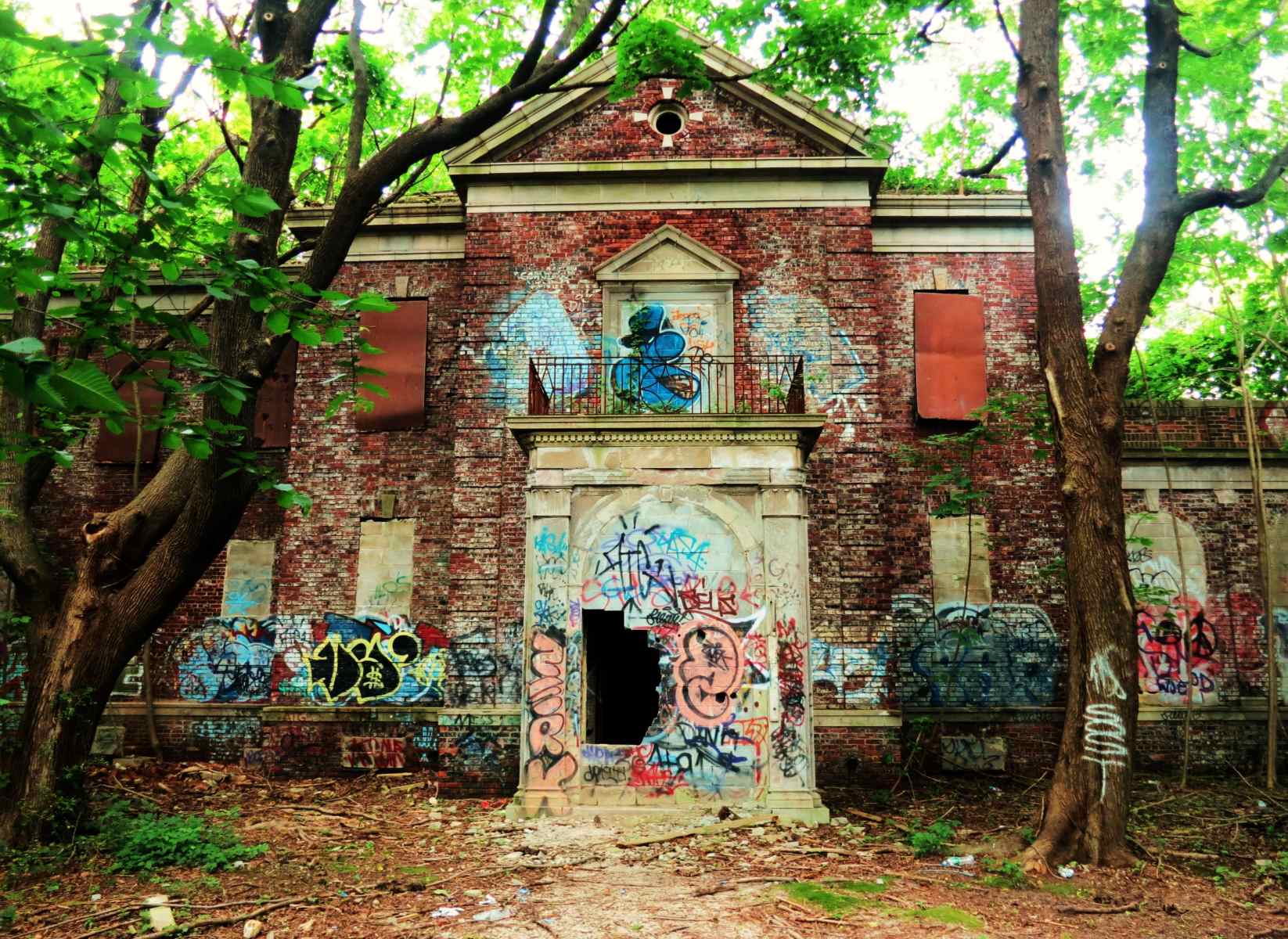
Did you know that the New York City Farm Colony, once a bustling community for the poor and elderly, now stands as an eerie reminder of the past? Established in 1829 on Staten Island, this historic site served as a refuge for those in need, offering shelter and work in exchange for food and lodging. Over the years, the Farm Colony evolved, reflecting changes in social welfare policies and urban development. Today, its abandoned buildings and overgrown grounds attract urban explorers and history buffs alike. Join us as we uncover 37 fascinating facts about this intriguing piece of New York City's history.
Key Takeaways:
- The New York City Farm Colony, once a self-sustaining community for the poor, now stands as a historic site with rich architectural marvels and intriguing stories of its residents.
- Despite its uncertain future, the Farm Colony continues to captivate urban explorers and preservationists, offering potential for tourism and adaptive reuse while facing funding challenges and the need for community involvement.
New York City Farm Colony: A Glimpse into History
The New York City Farm Colony, located on Staten Island, has a rich and intriguing history. Originally established to help the poor and destitute, it has evolved over the years. Let's dive into some fascinating facts about this historic site.
-
Founded in 1829: The Farm Colony was established to provide a place for the poor to live and work. It aimed to give them a sense of purpose and self-sufficiency.
-
Originally Called Richmond County Poor Farm: Before becoming the Farm Colony, it was known as the Richmond County Poor Farm. The name change reflected its broader mission.
-
Self-Sustaining Community: Residents worked on the farm, growing their own food and raising livestock. This self-sustaining model was quite innovative for its time.
-
Housed Over 2,000 Residents: At its peak, the Farm Colony housed more than 2,000 people, making it one of the largest poorhouses in the country.
-
Included a Hospital: The site had its own hospital to care for the sick and elderly residents, providing essential medical services.
Architectural Marvels and Changes
The Farm Colony's buildings and structures have undergone significant changes over the years. Some of these architectural marvels still stand today, offering a glimpse into the past.
-
Greek Revival Architecture: Many of the original buildings were designed in the Greek Revival style, which was popular in the 19th century.
-
Renovations in the 1930s: During the 1930s, the Works Progress Administration (WPA) funded renovations and new construction at the Farm Colony.
-
Abandoned in the 1970s: The site was abandoned in the 1970s, leading to the deterioration of many of its buildings.
-
Landmarked in 1985: In 1985, the New York City Landmarks Preservation Commission designated the Farm Colony as a historic district.
-
Plans for Redevelopment: There have been various plans to redevelop the site, including proposals for senior housing and mixed-use developments.
Life at the Farm Colony
Life at the Farm Colony was unique, with residents working together to maintain the community. Here are some insights into daily life at the colony.
-
Work Requirements: Residents were required to work on the farm or in other capacities to contribute to the community.
-
Educational Programs: The Farm Colony offered educational programs to help residents learn new skills and improve their lives.
-
Cultural Activities: Residents participated in cultural activities, including music and theater performances.
-
Religious Services: The colony had its own chapel, where residents could attend religious services.
-
Seasonal Celebrations: Holidays and seasonal events were celebrated with community gatherings and festivities.
Notable Residents and Stories
The Farm Colony was home to many interesting individuals, each with their own unique stories. Some of these residents left a lasting impact on the community.
-
Civil War Veterans: Several Civil War veterans lived at the Farm Colony, bringing their stories and experiences with them.
-
Artists and Musicians: The colony attracted artists and musicians, who contributed to the cultural life of the community.
-
Long-Term Residents: Some residents lived at the Farm Colony for decades, forming deep connections with their fellow inhabitants.
-
Personal Stories: Many residents shared personal stories of hardship and resilience, highlighting the human side of the colony.
-
Community Leaders: Some residents emerged as community leaders, advocating for better conditions and services.
The Farm Colony Today
Although the Farm Colony is no longer in operation, its legacy lives on. The site continues to be a point of interest for historians and urban explorers alike.
-
Popular with Urban Explorers: The abandoned buildings have become a popular destination for urban explorers and photographers.
-
Ghost Stories: The site is rumored to be haunted, with numerous ghost stories and paranormal investigations.
-
Documentaries and Books: The Farm Colony has been the subject of documentaries and books, preserving its history for future generations.
-
Community Efforts: Local community groups have worked to preserve the site and advocate for its redevelopment.
-
Educational Tours: Some organizations offer educational tours of the Farm Colony, providing insights into its history and significance.
Environmental Impact and Preservation
The Farm Colony's large expanse of land has had a significant environmental impact. Efforts to preserve and protect this area continue to be important.
-
Green Space: The site includes large areas of green space, which are important for local wildlife and biodiversity.
-
Historic Trees: Some of the trees on the property are over a century old, adding to the site's historical significance.
-
Environmental Studies: Researchers have conducted environmental studies to understand the impact of the Farm Colony on the local ecosystem.
-
Preservation Efforts: Preservationists have worked to protect the site from further decay and vandalism.
-
Community Gardens: There have been proposals to create community gardens on the site, continuing the tradition of farming and self-sufficiency.
Future Prospects and Challenges
The future of the New York City Farm Colony remains uncertain. Various challenges and opportunities lie ahead as the community decides what to do with this historic site.
-
Funding Issues: Securing funding for redevelopment and preservation has been a significant challenge.
-
Balancing Development and Preservation: Finding a balance between new development and preserving the site's historical integrity is crucial.
-
Community Involvement: Engaging the local community in decision-making processes is essential for the site's future.
-
Potential for Tourism: The Farm Colony has the potential to become a tourist attraction, drawing visitors interested in history and architecture.
-
Adaptive Reuse: Some proposals suggest adaptive reuse of the existing buildings for new purposes, such as housing or cultural centers.
-
Government Support: Government support and involvement will be key to the successful redevelopment of the site.
-
Ongoing Research: Historians and researchers continue to study the Farm Colony, uncovering new information and insights about its past.
Final Glimpse at New York City Farm Colony
New York City Farm Colony's history is a blend of innovation and hardship. Established in 1829, it aimed to provide work and shelter for the poor. Over the years, it evolved, reflecting societal changes. The colony's buildings, now abandoned, whisper tales of the past. Despite its decay, it remains a significant part of Staten Island's heritage. Preservation efforts highlight its importance, reminding us of the need to honor history. The Farm Colony's story is a testament to resilience and change. It stands as a reminder of the past's impact on the present. Exploring its history offers valuable insights into societal evolution. The colony's legacy continues to inspire, urging us to remember and learn. As we look back, we appreciate the lessons it offers. The New York City Farm Colony remains a poignant chapter in the city's rich history.
Frequently Asked Questions
Was this page helpful?
Our commitment to delivering trustworthy and engaging content is at the heart of what we do. Each fact on our site is contributed by real users like you, bringing a wealth of diverse insights and information. To ensure the highest standards of accuracy and reliability, our dedicated editors meticulously review each submission. This process guarantees that the facts we share are not only fascinating but also credible. Trust in our commitment to quality and authenticity as you explore and learn with us.


